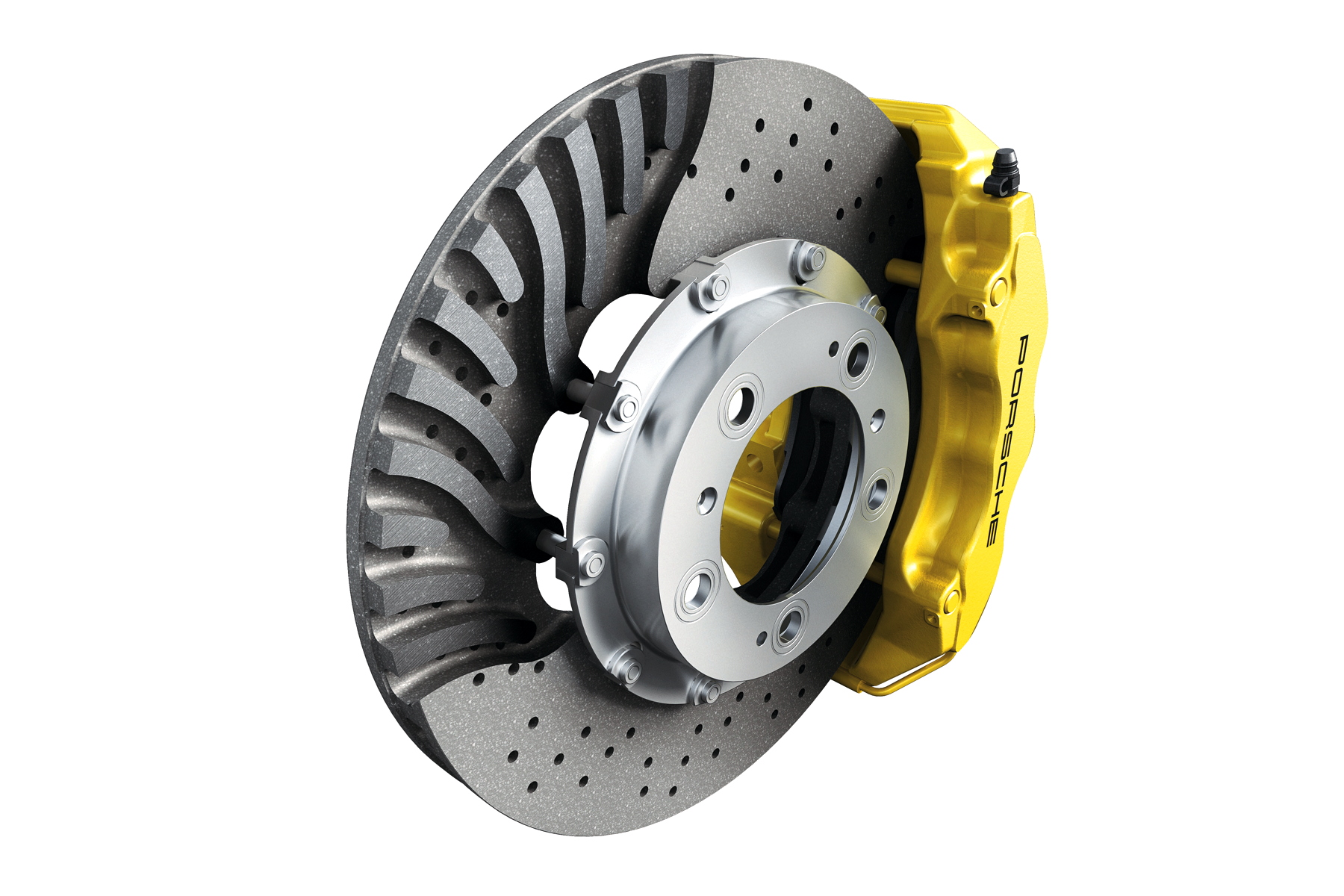Technology explained: Porsche Carbon Ceramic Brakes
After the technology was unveiled to the world at the 1999 IAA in Frankfurt, Porsche Carbon Ceramic Brakes (a joint project between Porsche and SGL Carbon) was launched in 2001 on the 911 GT2.
PCCB discs are constructed of a carbon fibre-reinforced ceramic core, covered with an additional ceramic friction layer. The result of 20 days manufacturing, carbon ceramic discs are 50% lighter than cast iron discs of the same size. The reduction in unsprung and rotating mass at each corner of the car results in more responsive handling and improved acceleration.
As well as the handling benefits, PCCB also benefits the braking performance itself. The ceramic coating improves the friction coefficient, improving initial ‘bite’ when the brakes are applied. This leads to greater confidence when attempting to brake late for a corner.
The combination of metallic silicon and silicon carbide creates a material (when combined with carbon fibre) that also offers improved wear compared to standard discs. This reduces brake fade during periods of prolonged use. The material is also more accustomed to operating at higher temperatures, meaning that discs are less likely to warp and ‘knock back’ the brake pads.
All this produces a constant brake pedal feel, something that improves a driver’s confidence when applying the brakes. PCCB is a vital addition to any 911 that is going to see a lot of track action.

Comments (0)